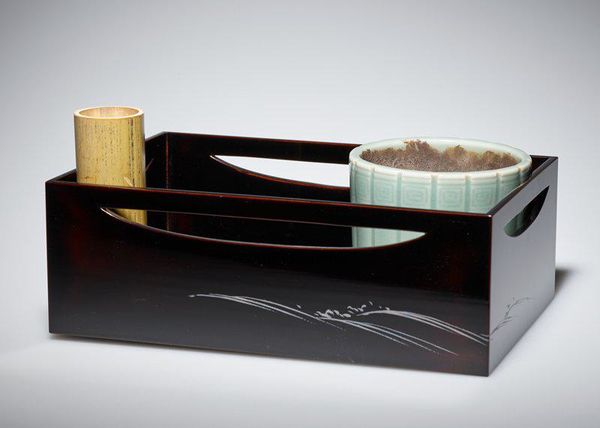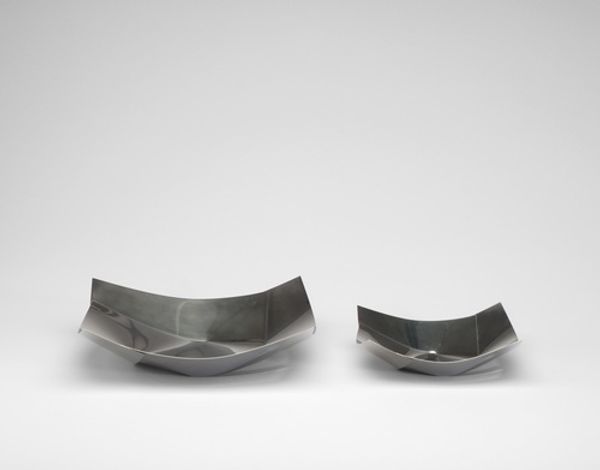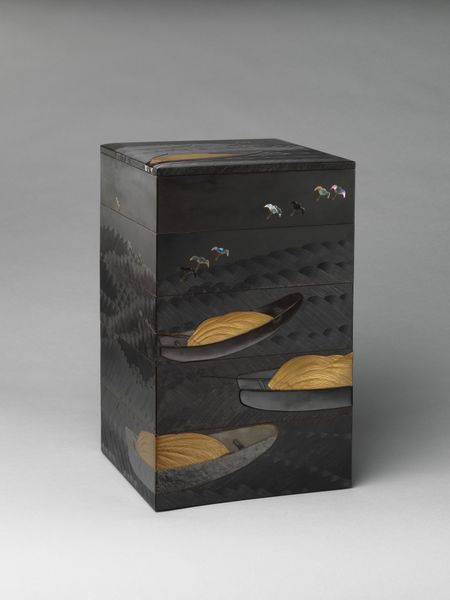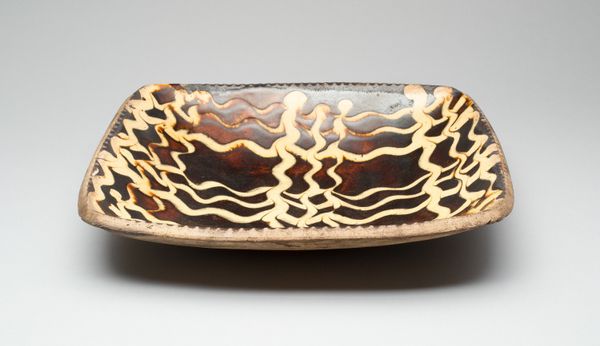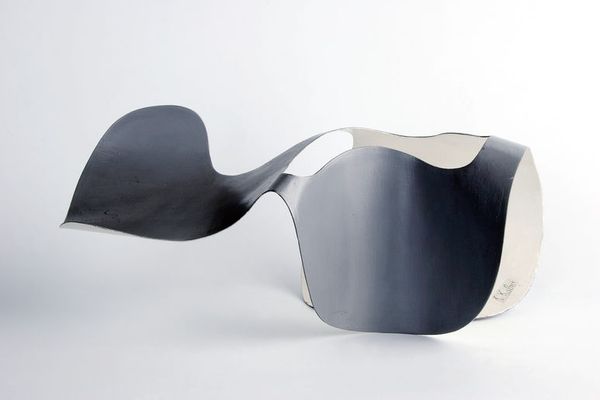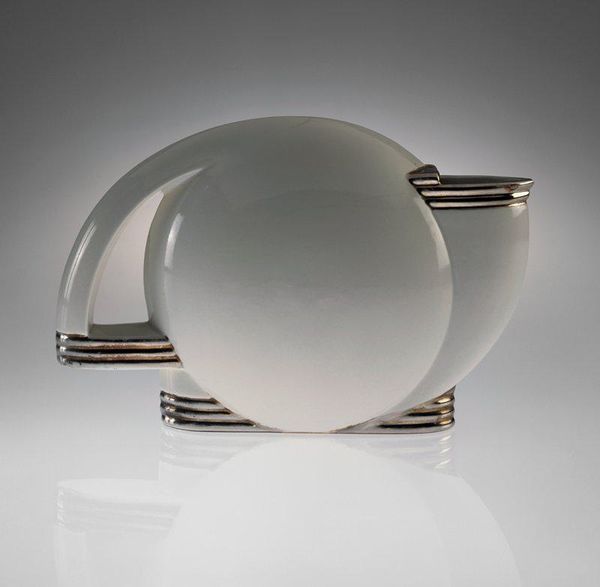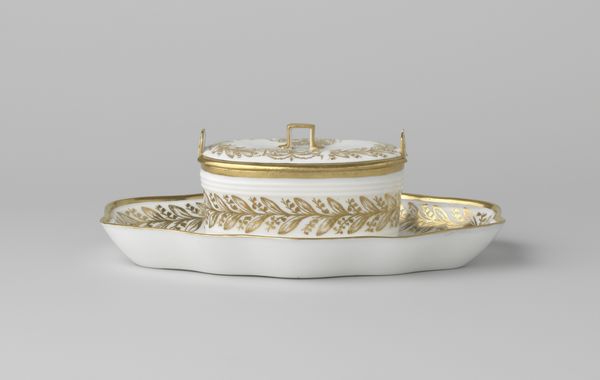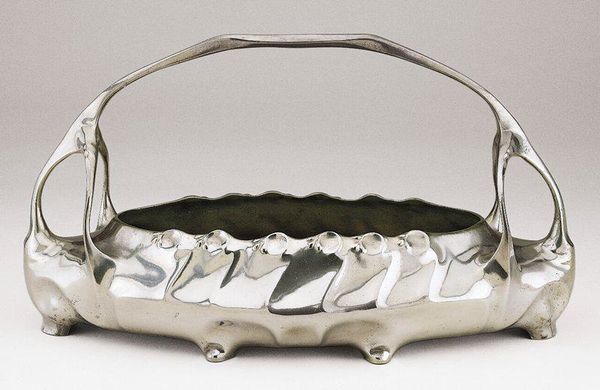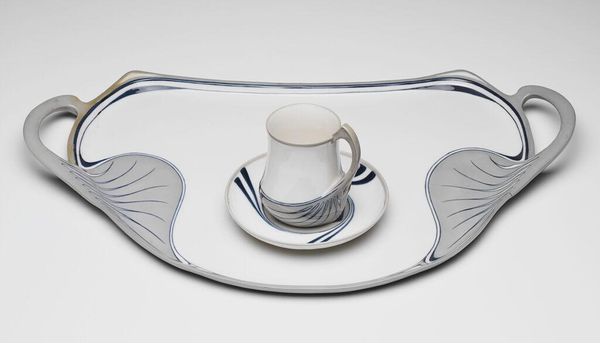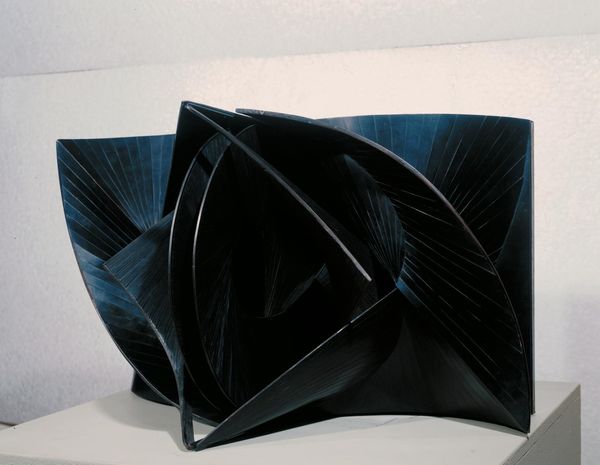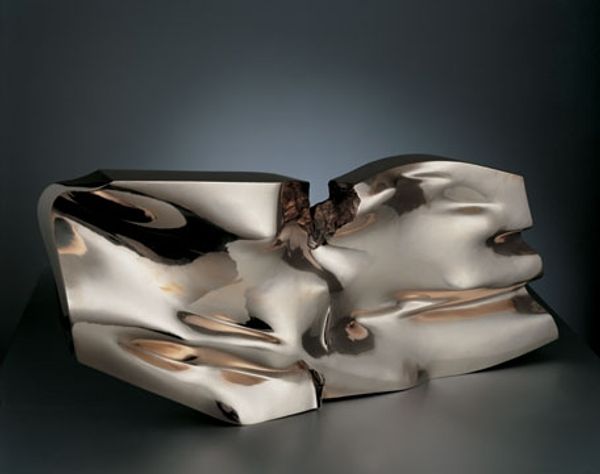![Tobacco tray with wave design [one of a pair] by Kamisaka Sekka](/_next/image?url=https%3A%2F%2Fd2w8kbdekdi1gv.cloudfront.net%2FeyJidWNrZXQiOiAiYXJ0ZXJhLWltYWdlcy1idWNrZXQiLCAia2V5IjogImFydHdvcmtzLzYwZDEwNjdiLWViNzMtNGM2YS05YzI5LWUxNTE2YzhjZDFiOC82MGQxMDY3Yi1lYjczLTRjNmEtOWMyOS1lMTUxNmM4Y2QxYjhfZnVsbC5qcGciLCAiZWRpdHMiOiB7InJlc2l6ZSI6IHsid2lkdGgiOiAxOTIwLCAiaGVpZ2h0IjogMTkyMCwgImZpdCI6ICJpbnNpZGUifX19&w=1920&q=75)
Tobacco tray with wave design [one of a pair] c. 1920s - 1930s
0:00
0:00
ceramic, impasto, wood
#
asian-art
#
ceramic
#
japan
#
impasto
#
wood
Dimensions: 4 11/16 × 10 1/8 × 6 5/8 in. (11.91 × 25.72 × 16.83 cm)
Copyright: No Copyright - United States
Editor: This is Kamisaka Sekka's "Tobacco Tray with Wave Design," made sometime in the 1920s or 30s. It's a ceramic and wood piece and it strikes me as incredibly minimalist and serene. The subtle wave motif almost blends into the dark wood. What do you see in this piece? Curator: I'm drawn to how everyday objects can carry such profound cultural weight. The wave motif itself is ancient, predating even Sekka, representing not only the literal ocean surrounding Japan, but also notions of resilience and adaptability – the wave persists, even against resistance. The functionality of a tobacco tray becomes secondary, imbued as it is with centuries of symbolic meaning. Editor: So the waves are a conscious connection to Japanese history? Curator: Precisely. Consider the use of ceramic and wood – materials deeply rooted in Japanese craft traditions. It's a quiet assertion of cultural identity, particularly relevant in the early 20th century as Japan navigated modernization and western influence. The minimalist design you observed also resonates. Can you think why? Editor: Hmm, I suppose it echoes Zen philosophies and appreciation of simplicity and imperfection? Curator: Exactly. Even the act of using the tray could be viewed as a small, contemplative ritual, a connection to tradition in a rapidly changing world. It suggests that objects, even functional ones, can be powerful mnemonic devices. Editor: I never considered a tobacco tray as a cultural statement! It’s amazing how a simple design can carry so much history. Curator: Indeed, seeing beyond the surface unlocks layers of meaning and invites us to connect with cultural memory embedded in these artworks.
Comments
minneapolisinstituteofart about 2 years ago
⋮
This simple tobacco set would be placed as a courtesy in the covered seating area outside of a tea house. The trays are sparsely decorated with rolling waves rendered as sketches of silver against a black ground. The set was regularly used, as evidenced by the light underpinnings of red showing through where the black overcoat has worn away, and the remnants of tobacco ash in the celadon ceramic jar.
Join the conversation
Join millions of artists and users on Artera today and experience the ultimate creative platform.
